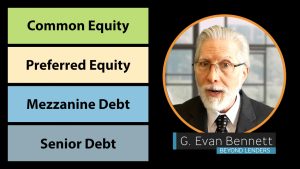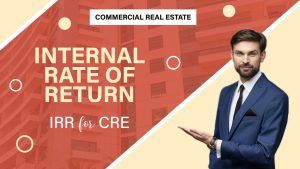Given the significance of NOI to investors and lenders, it’s essential that you know how to calculate it for investment properties.
Objectives
- Recognize the significance of NOI to investors and lenders.
- Learn the formula, its components, and how to calculate NOI.
- Distinguish between operating expenses and below-the-line expenses.
Listen to This Article
To buy an investment property, you must first determine its value and how much a lender may loan you. In both cases, net operating income, otherwise known as NOI, plays a significant role.
What Is NOI?
NOI is the income generated by an investment property after deducting operating expenses like property taxes and insurance, but before subtracting below-the-line expenses like debt service and capital expenditures. It’s a benchmark for comparing income-producing properties. Investors, appraisers, and lenders use it to estimate market value and when sizing loans. Understanding NOI is crucial for success in commercial real estate investing.
How to Calculate NOI - Focus on Income
To calculate NOI, first determine Potential Gross Income (PGI) for the property. PGI represents the income an investment property would generate at full occupancy. It includes rental income as well as other sources like reserved parking or storage fees, signage fees, and percentage rent from retail tenants. In commercial leases, tenants may also reimburse landlords for operating expenses by means of expense reimbursements, tenant recoveries, or CAM charges, which can be substantial.
To accurately estimate income for a property, factors beyond base rent should be considered, and potential income should reflect 100% occupancy. If the property is not fully occupied, income for vacant units can be estimated based on rent comps and the property’s operating history. Recoveries from tenants can also increase with occupancy.
Next, subtract a percentage of PGI for stabilized vacancy and credit loss, which estimates the vacancy or unpaid rent that any investment property will occasionally experience. The percentage may vary based on the market and property type. Lenders may use higher percentages for certain property types during market cycle downturns, regardless of the appraisal. Networking with other investors, appraisers, and lenders can help you understand the typical stabilized vacancy and credit loss in your market. A commonly used percentage is 5%. Deducting that from PGI gives you Effective Gross Income (EGI), which is a more realistic representation of an investment property’s potential.
Here’s a summary of the calculation so far: Potential Gross Income – Stabilized Vacancy & Credit Loss = Effective Gross Income
How to Calculate NOI - Focus on Expenses
Let’s now turn our attention to operating expenses. The day-to-day expenses of an investment property are called operating expenses, which can be divided into fixed and variable expenses. Fixed expenses don’t change with occupancy, while variable expenses increase or decrease with it. Examples of fixed expenses are property taxes and insurance premiums, while utilities and repairs & maintenance are examples of variable expenses. Other examples of operating expenses in commercial real estate include:
- Landscaping & Groundskeeping
- Janitorial
- Security
- Management
- Reserves for Replacement
To calculate net operating income, subtract a property’s operating expenses from its effective gross income. However, there are expenses not included in this calculation called “below-the-line expenses,” such as debt service and capital expenditures. These expenses are not related to day-to-day operations and vary from property to property. NOI is a benchmark for apples-to-apples comparisons, so only typical expenses are factored in.
Here’s a summary of the second and final part of the calculation: Effective Gross Income – Operating Expenses = Net Operating Income
Using NOI like Investors and Lenders
Now you know how to calculate NOI. Use this knowledge to estimate the market value of a property by dividing its NOI by a capitalization rate. For a more detailed explanation, watch our video on cap rates.
What about loans? To estimate the loan amount a property can support, divide its NOI by the lender’s minimum debt-service coverage ratio. This, along with an interest rate and period of amortization, can help you determine how much the lender may be willing to loan you. Watch our video on loan-to-value, LTV, and debt-service coverage ratio, DSCR, for more information on loan underwriting.



















